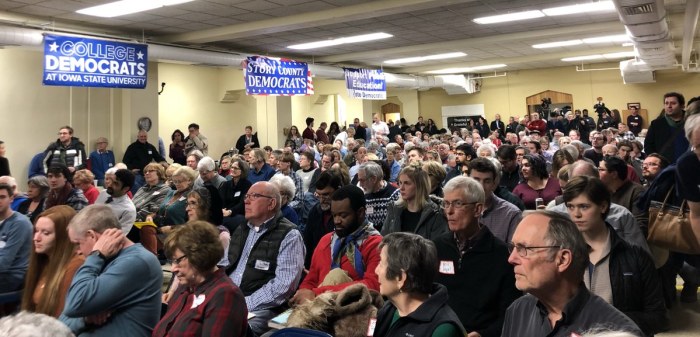Ira Lacher reflects on the stakes for presidential candidates, nearly a year before the Iowa caucuses. -promoted by Laura Belin
“It gets late early out here.”
Yogi Berra is credited with that observation about the final month of the baseball season, when the lower-in-the-sky sun of early fall casts longer shadows over more of the field.
Managers will tell you a win in April is just as important as a win in September. But when you don’t win in September, you have fewer opportunities to make up those losses.
Heading into March, there are about eleven months to go before Iowans tell the world why so-and-so should be the Democrat to oppose Donald J. Trump. Eleven months may seem like a long time. There are unanticipated world and national events to come, revelations to be made, gaffes to occur.
And yet, there is no guarantee of how many of the 15 or so Democrats who have declared for the nomination will be around to mount the soapbox at the Iowa State Fair in August. Or even march in July Fourth parades.
Politics is rife with famous early flame-outs. Joe Biden announced for the 1988 race on June 9, 1987. He ended his campaign September 23. Former Iowa Governor Tom Vilsack declared for the 2008 race on November 30, 2006. He withdrew Feb 23, 2007. And then, there was Gary Hart. The fair-haired, telegenic senator from Colorado, whom many considered the far-and-away front-runner for the 1988 Democratic nod, dropped out after 25 days.
And all that was before an age when you could be the hottest app one day and Usenet the next.
This year, more candidates are vying for attention than ever before. And with so many, and perhaps even more to come — Biden and Sherrod Brown, both anticipated joiners, have yet to be heard from — the number of candidate/days shrinks precariously. Which means, if you’re getting only polite applause in February, there’s less time to turn it around and stay visible.
When you attend this traveling road show, take note, not only of how much money the candidate has raised and not the size of the audience, but how they react at appearances. If they’re seated, do they rise out of their chairs as one for applause lines, or here and there in pockets? Or worse, remain in their seats? How loud and sustained is their applause? How quickly does the room empty out? And as they leave, how eager do they seem compared with when they entered?
Presidential politics in Iowa is a spectator sport — not college football, when a single loss can ruin your chances of winning the national championship. But more like the Kentucky Derby, when falling behind a crowded field in the first turn dooms your chances of catching up.
But whatever your preferred sports metaphor, it really does get late early out here. In Iowa. In February.
Top image: Crowd at the Story County Democrats soup supper on February 23. Photo by Nora Walsh-DeVries, political director for Senator Kamala Harris’ campaign in Iowa, used with permission. Presidential candidate Julian Castro also attended the soup supper, as did likely contender John Hickenlooper.


1 Comment
Good article
Not everyone who has announced will make it to Caucus night. Some examples:
former Governor John Connelly trailed Ronald Reagan by 45-29 in February of 1979. He would finish below 10.
Mario Cuomo ran second in early 1983 before deciding not to run.
Elizabeth Dole ran second in 1999 before not running.
Herman Cain led in 2012 and then withdrew.
Scott Walker led in Iowa in 2015 and withdrew.
But perhaps the most famous flameout of All was Gary Hart in 1987. In February of 1987 Gary Hart led Iowa 59-14: the largest lead anyone has ever had in Iowa. He withdrew only to later re-enter the race in early January of 1988 and take a 20 point lead.
He wound up with 1 percent a scant 6 weeks later.
Dan Guild Mon 25 Feb 8:09 PM